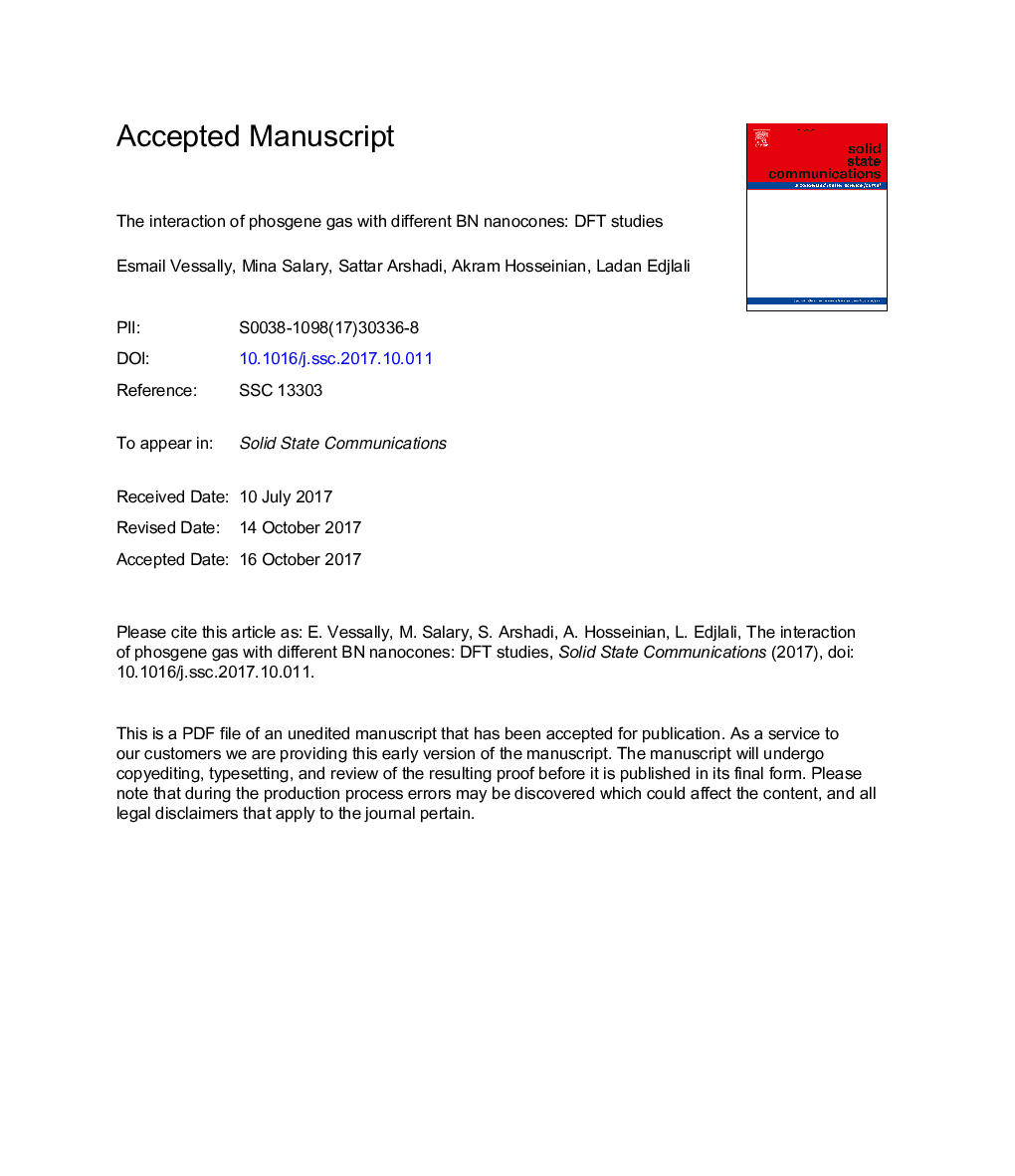| Article ID | Journal | Published Year | Pages | File Type |
|---|---|---|---|---|
| 7988044 | Solid State Communications | 2018 | 27 Pages |
Abstract
We investigated the interaction of a phosgene molecule with four kinds of BN nanocones with 60°, 120°, 180° and 240° disclination angles using density functional theory calculations. Based on the results, the phosgene molecule tends to be adsorbed on the apex of all BN nanocones with adsorption energies of â11.1, â4.6, â16.6, and â14.8â¯kcal/mol, respectively. It was predicted that both of low coordination B atom, and BB antiphase defects stabilize the LUMO level of the BN nanocones, and make them more reactive to phosgene gas. The electrical conductivity of the BN nanocone with 60° disclination angle will not change at the presence of the phosgene; and it cannot be used as a sensor. But the electrical conductivity of the BN nanocones with 120°, 180° and 240° disclination angles significantly increases. Therefore, these nanocones may be promising candidates for application in phosgene sensors. We found that the order of electronic sensitivity of the BN nanocones toward the phosgene gas is as follows: BN-240â¯>â¯BN-120â¯>â¯BN-180â¯Â»â¯BN-60. The recovery time for the BN nanocones with 60°, 120°, 180° and 240° disclination angles is about 4.5â¯Ãâ¯10â5, 7.8â¯Ãâ¯10â10, 0.48, and 0.02â¯sâ¯at 298â¯K, respectively, indicating that the BN nanocones benefit from a short recovery time as chemical sensors.
Related Topics
Physical Sciences and Engineering
Materials Science
Materials Science (General)
Authors
Akram Hosseinian, Mina Salary, Sattar Arshadi, Esmail Vessally, Ladan Edjlali,
